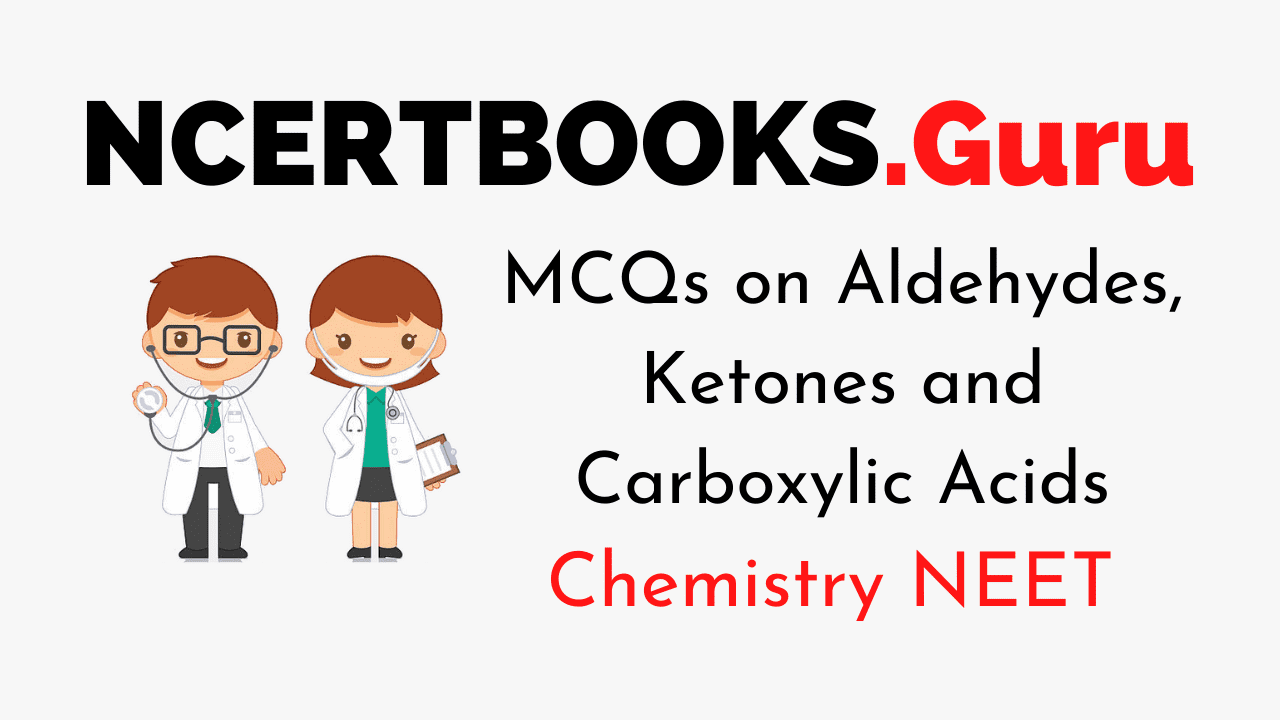NEET Chemistry is the scoring paper in the medical entrance examination. Here, you will discover the NEET Chemistry MCQ Questions for all Concepts as per the latest syllabus. Practice more on a regular basis with these NEET Chemistry objective questions on air pollution and improve your subject knowledge & problem-solving skills along with time management. NEET Chemistry Aldehydes, Ketones and Carboxylic Acids Multiple Choice Questions make you feel confident in answering the question in the exam & increases your scores to high.
MCQs on Aldehydes, Ketones and Carboxylic Acids
1. A mixture of benzaldehyde and formaldehyde on heating with aqueous NaOH solution gives
(a) benzyl alcohol + sodium formate
(b) sodium benzoate + methanol
(c) benzyl alcohol + methanol
(d) sodium benzoate + sodium formate
Answer
Answer: (a)
2. Which of the following has the most acidic hydrogen?
(a) hexane-2,4-dione
(b) hexane-2,3-dione
(c) hexane-2,5-dione
(d) hexane-3-one
Answer
Answer: (a)
3. A new C-C bond formation is possible in
(a) cannizzaro reaction
(b) friedel crafts reaction
(c) clemmensen reduction
(d) reimer tiemann reaction
Answer
Answer: (b,d)
4. Under Wolff-Kishner reduction conditions, the conversions which may be brought about are
(a) cyclohexanone into cyclohexane
(b) benzaldehyde into benzyl alcohol
(c) cyclohexanone into cyclohexanol
(d) benzophenone into diphenylmethane
Answer
Answer: (a,d)
5. The formation of cyanohydrin from a ketone is an example of
(a) electrophilic addition
(b) nucleophilic addition
(c) nucleophilic substitution
(d) electrophilic substitution
Answer
Answer: (b)
6. Benzoic acid reacts with conc.HNO3 and conc.H2SO4 to give
(a) o-nitrobenzoic acid
(b) p-nitrobenzoic acid
(c) m-nitrobenzoic acid
(d) o,p-dinitrobenzoic acid
Answer
Answer: (c)
7. An inorganic compound producing an organic compound on heating is
(a) ammonium cyanate
(b) soda lime
(c) sodamide
(d) potassium cyanide
Answer
Answer: (a)
8. The reaction of ethyl formate with an excess of CH3MgI followed by hydrolysis gives
(a) ethanol
(b) n-propyl alcohol
(c) propanal
(d) isopropyl alcohol
Answer
Answer: (d)
9. Formic acid and acetic acid are distinguished by reaction with
(a) sodium ethoxide
(b) sodium
(c) HgCl2
(d) 2,4-dinitrophenylhydrazine
Answer
Answer: (c)
10. Heating a mixture of sodium benzoate and soda lime gives
(a) calcium benzoate
(b) benzene
(c) sodium benzoate
(d) methane
Answer
Answer: (b)
